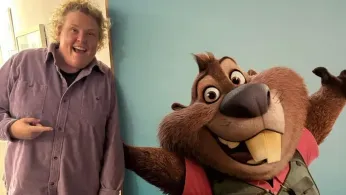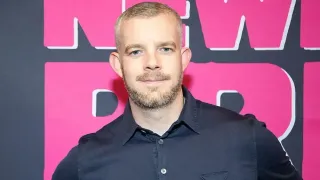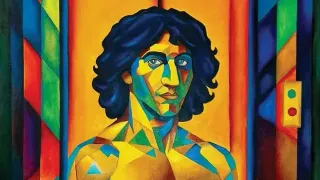
3 hours ago
'Zootopia 2’s Beaver Breakthrough: Disney’s Newest Gay Character Is a Queer Icon in Fur
READ TIME: 3 MIN.
When Disney announced that Fortune Feimster would voice a new character named Hazel in Zootopia 2, few expected the news to become a viral sensation. But within hours, social media was buzzing with the revelation that Hazel, a beaver with a bold personality and a penchant for adventure, would be Disney’s first openly gay character in a major animated film. The casting of Feimster, a beloved lesbian comedian known for her sharp wit and unapologetic queerness, has only amplified the excitement, turning what could have been a simple voice casting into a cultural moment for LGBTQ+ audiences worldwide .
For many, the significance of Hazel’s introduction cannot be overstated. Disney has long been criticized for its lack of LGBTQ+ representation, especially in its animated features. While the company has made strides in recent years—such as including a same-sex kiss in Lightyear and featuring LGBTQ+ characters in live-action films like The Owl House and Andi Mack—Zootopia 2’s Hazel stands out as a first: an openly gay character in a major animated film, voiced by a queer icon .
Fortune Feimster’s casting as Hazel is more than just a casting choice; it’s a statement. Feimster, known for her work on shows like The Mindy Project and her stand-up comedy, has been a vocal advocate for LGBTQ+ rights and visibility. Her humor often draws from her experiences as a lesbian, and her presence in Zootopia 2 brings a layer of authenticity and joy to the character of Hazel .
In a recent interview, Feimster shared her excitement about the role: “It’s an honor to bring Hazel to life. She’s funny, fearless, and unapologetically herself. I hope she inspires kids to be proud of who they are, no matter what” . Feimster’s words resonate with many LGBTQ+ viewers who have longed to see themselves reflected in the stories they grew up with.
The announcement of Hazel’s character has sparked a wave of reactions across social media. Many LGBTQ+ fans have expressed their joy and gratitude, sharing memes and fan art celebrating the beaver’s arrival. “Finally, a Disney character I can see myself in,” wrote one fan on Twitter. “Hazel is going to be a role model for so many kids” .
However, the news has also sparked debate. Some critics argue that Disney’s approach to LGBTQ+ representation is still too cautious, with Hazel’s queerness being hinted at rather than explicitly stated in the film’s marketing. Others point out that while Hazel is a step forward, there is still much work to be done in terms of diversity and inclusion in Disney’s storytelling .
Despite these concerns, many see Hazel’s introduction as a positive development. “Representation matters, especially for young people,” said Dr. Sarah Johnson, a media studies professor at the University of California, Los Angeles. “Seeing a character like Hazel on screen can help normalize LGBTQ+ identities and foster a sense of belonging” .
The introduction of Hazel in Zootopia 2 is part of a broader trend in media toward greater LGBTQ+ visibility. In recent years, there has been a growing demand for more diverse and inclusive stories, both from audiences and from within the industry. Disney’s decision to cast Feimster and create a character like Hazel reflects this shift, signaling a commitment to telling stories that reflect the full spectrum of human experience .
For many LGBTQ+ viewers, Hazel’s arrival is a reminder of the power of representation. “It’s not just about seeing a character who looks like you,” said one fan. “It’s about feeling seen, heard, and valued. Hazel is a symbol of hope and progress” .
As Zootopia 2 prepares to hit theaters, the excitement around Hazel continues to build. Whether she becomes a beloved icon or a stepping stone to even greater representation, one thing is clear: Hazel’s story is a milestone in the ongoing journey toward a more inclusive and diverse media landscape.






